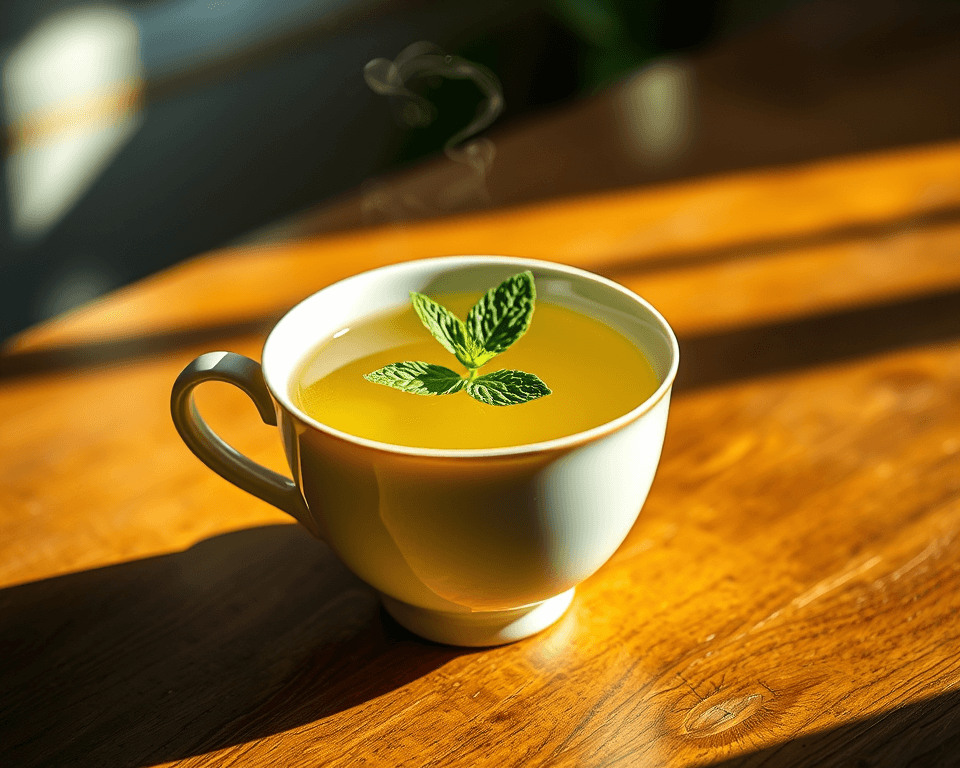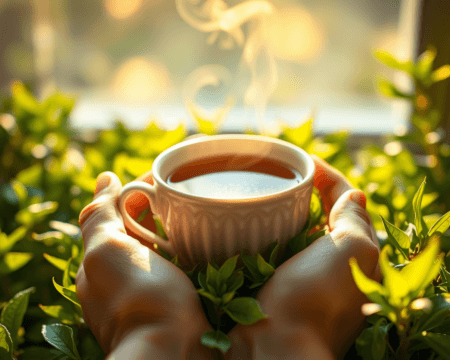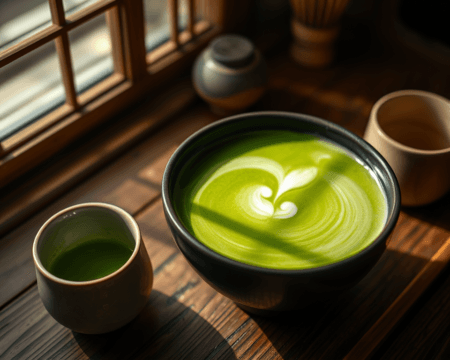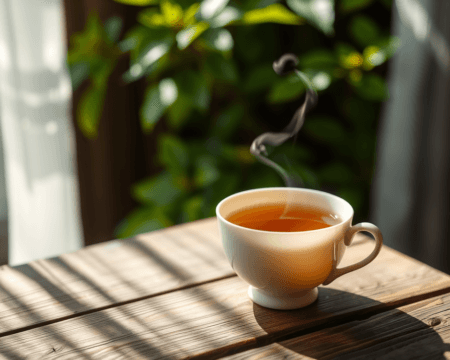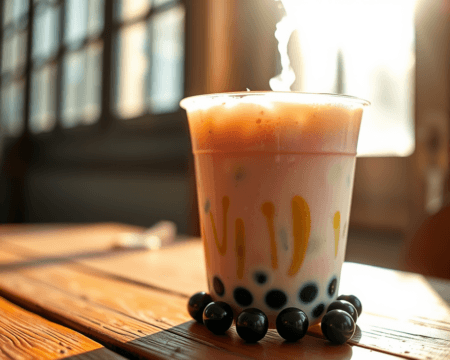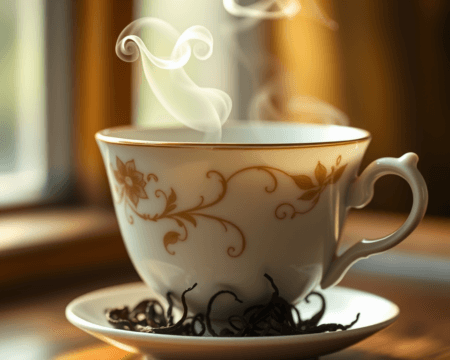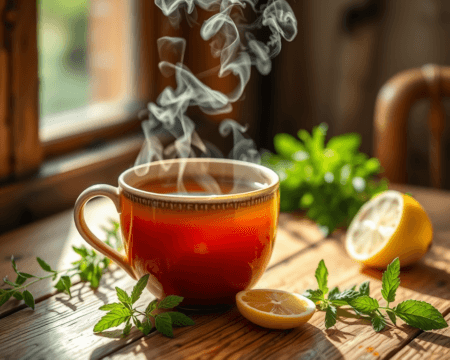Thinking about how much a cup of tea should set you back? You’re not alone. With tea’s surge in popularity across the globe, the price can vary wildly depending on where you go, what type you’re drinking, and even where it’s been sourced from. So, sit tight while I break down everything you need to know about tea pricing and what actually influences those costs. It’s time to get equipped with some serious knowledge so you can enjoy your next cup without any surprise costs!
Key Takeaways
- The average price of a cup of tea ranges significantly based on quality, origin, and location, typically falling between $1 and $6.
- Regional differences add an extra layer of complexity, with urban areas generally charging more than smaller towns.
- Factors like café versus home brewing have a huge impact on what you’ll end up spending.
- Trends show a rising demand for organic and specialty teas, which are often priced higher due to the quality and sourcing methods.
Understanding the Average Price Range for a Cup of Tea
General Price Ranges Globally
When you sip on that warm, comforting cup of tea, have you ever wondered how much it actually costs globally? Spoiler alert: it varies! In the U.S., you can expect to pay anywhere from $1 to $6, depending mostly on where you buy it and what kind of tea you’re getting.
If you grab a cup of basic black tea from a local diner, you’re looking at the lower end of that spectrum. But if you waltz into a trendy café and order a fancy matcha latte, you could be shelling out $5 or more! It’s all about that tea beverage pricing and it changes based on a ton of factors.
Here’s a breakdown of average costs:
| Tea Type | Price range ($) |
|---|---|
| Basic black tea | 1 – 3 |
| Green tea | 2 – 5 |
| Specialty tea | 3 – 7 |
| Organic teas | 4 – 10 |
Regional Pricing Variations
Now, let’s talk about where you are when you fill up your cup. Prices can fluctuate dramatically based on your location. Urban areas, especially popular cities like New York or San Francisco, often boast higher prices. It’s the classic city tax, right?
In contrast, grab a cup in a small town café, and you might just find prices that are almost half. This really puts the spotlight on regional tea prices and how they reshape your wallet’s expectations.
Take a look at cities:
| City | Average Price ($) |
|---|---|
| New York | 5 – 7 |
| Austin | 3 – 5 |
| Seattle | 4 – 6 |
| Chicago | 3 – 5 |
When you’re traveling, be co-piloting with awareness of these price differences. Knowing the landscape can give you a definite edge on where to sip within your budget.
Factors Influencing the Cost of a Cup of Tea
Quality and Origin of Tea
Do you ask yourself why some teas pack a hefty price tag while others seem like pocket change? It all boils down to quality and origin. The quality of tea plays a massive role in its final cost. High-grade teas, especially those sourced from renowned regions like Darjeeling in India or Uji in Japan, come with a premium.
I mean, you can’t just grow top-notch leaves in any old backyard. We’re talking artisanal, organic, and often hand-picked varieties. Think about how much effort goes into it! The switch from mass-produced to premium tea blends could easily change your price range from $3 to $10. Crazy, right?
On the other hand, if you lean toward the more common, easily sourced teas, you’ll find yourself paying significantly less. For example, a basic black tea bag from a box of Lipton will cost you just a fraction compared to high-grade loose-leaf tea from a specialty shop.
Differences Between Café and Home Brewing Costs
Let’s touch on the gorilla in the room: café versus home brewing. Have you ever noticed your tea expenditures steadily climbing? You buy a cup out, and then you realize you could’ve brewed a whole pot at home for half that price. The cost comparison between café and home brewed tea can be staggering!
In a café, you’re not just paying for the leaves. You’re throwing down cash for the ambiance, the expertise of baristas, and let’s not forget those fancy flavor combos. But when you roll up your sleeves at home? A box of tea can cost anywhere from $3 to $10 and that’ll serve you multiple cups!
Assuming you go for some basic organic green tea that you find in a health food store, your cost might break down like this:
| Aspect | Cost if Brewed at Home | Cost at Café |
|---|---|---|
| Tea Box (20 bags) | ~$4 | N/A |
| Brewing (1 cup) | $0.20 | $2 – $5 |
| Overall for 20 cups | ~$4.20 | $40 – $100 |
If you’re brewing your own, why not explore some fun flavors? Add in honey, lemon, or spices for a little extra flair—while saving those dollars for something else!
Price Comparisons in Different Cafés and Tea Shops
Popular National and Local Tea Shops
Let’s break this down even more. Where you choose to buy your tea can seriously swing your costs. National chains like Starbucks will always charge a little more—simply put, they can because of their brand power. Have you seen the price of a chai latte there? It’s often around $5.
Local tea shops can provide interesting pricing, too. I recently visited a local joint that offered fantastic loose-leaf teas. A cup of milk oolong there was only $4, way cheaper than what I’d pay at some larger chains for lesser quality.
A comparison of some popular cafés shows how the landscape shifts:
| Tea Shop | Average Price Range ($) |
|---|---|
| Starbucks | 4 – 6 |
| Teavana (by Starbucks) | 5 – 10 |
| Local Tea House | 3 – 6 |
| David’s Tea | 4 – 8 |
Seasonal Variations in Tea Prices
Did you know that tea prices can fluctuate with the seasons? Yup! It’s not just about what’s trendy in the tea world; it’s about supply and demand. Certain teas may be cheaper during their harvest season, while others might increase in price due to limited supply or high demand during cooler months.
Take herbal teas, for instance—those bad boys often spike in price during winter, when everyone’s looking for cozy comforts. Understand the seasonal tea pricing means you can plan your purchases better.
Here’s how prices can shift throughout the year, based on a couple of types:
| Tea Type | Spring | Summer | Fall | Winter |
|---|---|---|---|---|
| Black Tea | $2 | $3 | $4 | $5 |
| Green Tea | $3 | $3 | $4 | $4 |
| Herbal Tea | $3 | $4 | $5 | $6 |
Keep an eye on seasonal sales! Oftentimes, local shops offer promotions during harvest periods—which is an excellent time to stock up!
Trends in Tea Pricing
The Rise of Organic and Specialty Teas
You’ve probably noticed that organic and specialty teas are becoming all the rage. Guess what? They also come with price tags to match. With more and more people striving for healthier lifestyles, the demand for higher-quality, sustainably sourced teas has skyrocketed.
Expect to pay a bit more for these options—they can often hit the $7 to $10 mark for a single cup, especially if they’re sourced from exclusive estates. This demand for organic tea isn’t likely to fade anytime soon; if anything, it’s just heating up!
To give you a sense, a box of organic chamomile might cost about $5, yet at a high-end tea shop, a loose-leaf version could easily cost $8 a cup. The price reflects its unique sourcing and quality—after all, you want those soothing herbal notes and pristine flavors, right?
The Economic Impact on Tea Pricing
Let’s not overlook the ripple effects of broader economic conditions on tea pricing. Global supply chains, trade agreements, and even climate change can affect those prices. If you’re sipping on a cup priced high because of sudden inflation in agricultural costs or shifts in trade policies, it’s worth knowing you’re part of that big economic landscape!
The reality is, economic factors play a crucial role in how much you end up paying. When looking deeply into these economic influences on commodity prices, you can actually prepare for fluctuations—like checking prices at your go-to tea shop before making that impulse buy.
Just as with any commodity, whether it’s tea or bananas, external variables can have us paying over the odds at times, while certain seasons might pull prices back down. Awareness is key!
As you embrace your tea journey, keep these insights in your back pocket. Knowledge is power, and understanding how various factors shape what you pay can lead to smarter decisions at your next tea stop! So, sip wisely and enjoy every drop!
Frequently Asked Questions
What factors influence the price of tea?
The price of tea is influenced by several factors, including the quality of the tea leaves, their origin, and where they are purchased. Specialty teas, organic varieties, and those with unique processing methods often come with a higher price tag.
Are there any significant regional price differences for tea?
Yes, regional variations can significantly affect tea prices. Urban areas usually charge more for tea compared to smaller towns due to higher cost of living and demand, which can make specialty cafes in cities particularly pricey.
How does brewing tea at home compare to buying it at a café?
Brewing tea at home is generally more economical than purchasing it from a café. When you buy tea bags or loose leaf tea in bulk, you can enjoy multiple servings at a fraction of the cost of a single cup brewed on-site.
What types of tea are considered specialty teas?
Specialty teas include premium varieties such as high-quality green teas, artisanal blends, and rare herbal infusions. These teas are often sourced from specific regions and undergo meticulous production processes, resulting in unique flavor profiles and higher prices.
Why is organic tea more expensive than regular tea?
Organic tea tends to be pricier because it is cultivated without synthetic pesticides and fertilizers, adhering to strict agricultural standards. The labor-intensive processes involved in organic farming and certification also contribute to the increased cost.
How can I find affordable high-quality tea?
To find affordable high-quality tea, consider shopping at local specialty tea shops, farmers’ markets, or online retailers that focus on direct sourcing. Look for bulk options and seasonal sales to maximize your purchasing power.
Can I save money by growing my own tea?
Growing your own tea can be a rewarding hobby that potentially saves money in the long run. However, it requires space, time, and knowledge about the tea plant (Camellia sinensis) and its care, which is essential for successful cultivation.
Is it worth paying more for specialty tea?
Investing in specialty tea can enhance your tea-drinking experience, as these teas often provide unique flavors, aromas, and health benefits. If you appreciate quality over quantity, the higher prices may be worth it for the exceptional taste and quality.
What are the health benefits of drinking tea?
Tea offers numerous health benefits, such as improved hydration, antioxidants, and potential heart health support. Different types of tea can provide varying health benefits, so exploring a range of options is recommended for optimal wellness.




